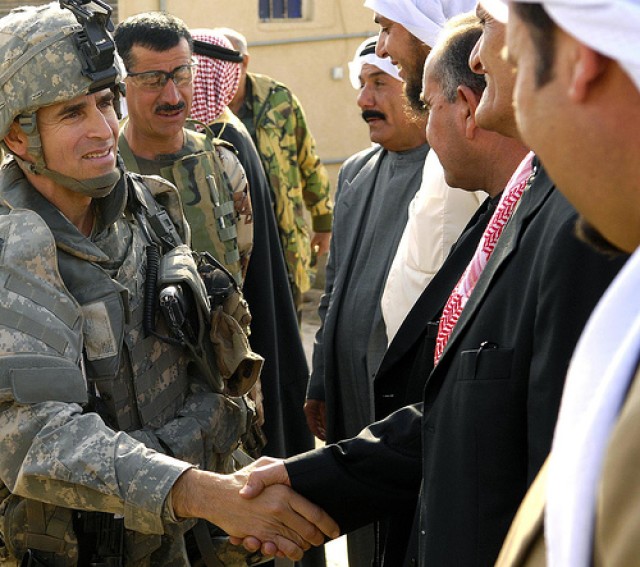
Army leaders told members of the Commission on Wartime Contracting in Iraq and Afghanistan during an April 19 hearing that the service is institutionalizing contracting reforms introduced over the last seven years of conflict.
"We are more than doubling our contractor workforce, including more than 175 noncommissioned officers and we will add over 1,600 new civilian contracting specialists to provide better contract execution, management and oversight," Lt. Gen. Bill Phillips, principal Military Deputy to the Assistant Secretary of the Army for Acquisition, Logistics and Technology, told the commission.
"We have to institutionalize the way we execute contingency contracting. We've made tremendous progress over the last year, but there is still quite a ways to go," said Phillips.
Over the last decade, Army contracting experienced over a 15-percent reduction in its workforce while simultaneously managing a 500-percent increase in contracted dollars, service officials said. The Army issued $135 billion in contracts in FY 2009, compared to $32 billion in 1997. Meanwhile, more than $1.2 billion in Army contracts were issued from Kabul, Afghanistan in 2009.
Commissioner Grant Green, former Under Secretary of State for Management, asked the witnesses if the Army will be able to sustain and build upon its progress when combat operations decrease. "How do we institutionalize the things we are talking about' What do you do when the incentive goes away'" Green asked the panelists.
Phillips emphasized the need to make these advances in contracting part of a permanent Army process.
"There is a sense of urgency. We are integrating contracting inside our warfighting units. I hear division commanders talking about contracting in a way that they never have before. If we don't get that inside our rules, regulations and institutionalize it and get in inculcated inside all our processes and in the QDR and other documents, then we will have missed an opportunity," he told the Commission.
Phillips, who oversaw war zone contracting as head of the Joint Contracting Command, Iraq and Afghanistan (JCCIA), told the Commission that the Army has made substantial progress implementing contracting reforms in the last few years.
"For JCCIA for the year that I was in command, we did not issue a contract unless we had a Contracting Officer Representative (COR) that was trained and assigned to the contract," Phillips said.
Along these lines, the Army is working vigorously to expand its acquisition workforce as a way to meet these challenges, service leaders told the commission. The Army has more than doubled its number of Contracting Officers Representatives in Iraq and Afghanistan over the last year in an effort to improve oversight and help rebuild local communities.
Within the last year, the number of CORs in Iraq has jumped from a 59-percent fill rate up to a 94-percent fill rate. Similarly, the number of CORs in Afghanistan has more than doubled, jumping from a 38-percent fill rate in January of last year to an 80-percent fill rate by January of this year.
In short, the Army has added hundreds of CORs to the war zone to help oversee local contracting and ensure that goods and services arrive as paid for, said Edward Harrington, deputy assistant secretary of the Army for Procurement.
"I think we took some great opportunities internal to the Army to focus on CORs. Our Army has done extraordinary work to bring in the right kind of workforce," Phillips told the commission.
The Army is also following mandates emerging from the Weapons Systems Acquisition Reform Act 2009 by requiring early consideration of cost schedule and performance trade-offs and implementing Preliminary Design Reviews prior to Milestone B decisions as a way to ensure the technological maturity of systems in development, service officials said.
In addition, Harrington mentioned that the Army is stepping up its Procurement Management Review program to ensure improved contract management; 16 reviews were conducted in FY 2009. In 2010, nine of 14 scheduled reviews have been completed.
Witnesses at the April 19 hearing said Army leaders are steadfast in their commitment to continue funding for these improvements in contracting and oversight.
"The senior leadership spotlight on this is absolutely essential," said Harrington.

Social Sharing